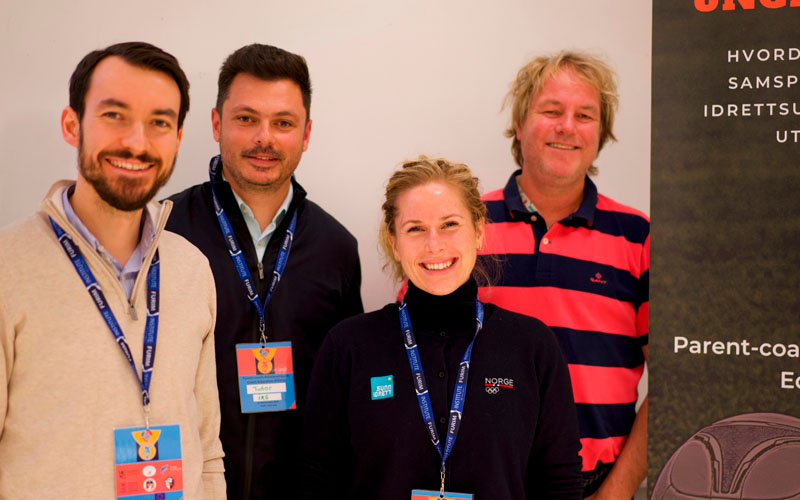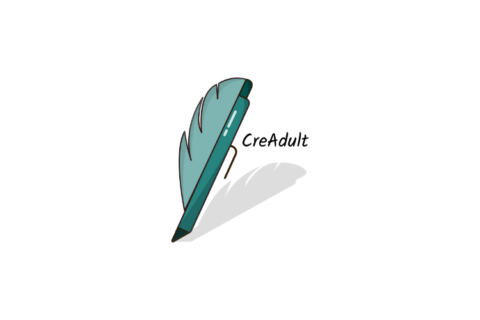
Relationships between parents and coaches in youth sports.
How can we help sports youth through challenges such as harassment, bullying and performance pressure? Together with professionals from abroad, we held a conference on just this.
FURIM Department and Kristiania University College held a large conference on the parental role in youth sports. Almost 100 people were registered for the event, which was under the expert guidance of Max Myklagard in FURIM. In order for the congress to be successful, he received valuable help from bachelor students in physical activity and nutrition at HK to plan and carry out the event.
Foreign professionals in the mix
The congress had the main focus on youth sports, and how the interaction between parents, coaches and sports youth can be optimized. To shed light on the problem, renowned researchers and professionals from Norway, Wales, Italy and Romania were brought in.
The lectures focused on the demanding phase of puberty, with a body under strong rebuilding, and with subsequent challenges with eating disorders, harassment, bullying and performance pressure. The sports researchers presented research that shows how parents can help sports youth in this demanding phase. It was reflected on the challenges that are in today’s parenting role.
Anna Solheim from Sunn Idrett lectures on the importance of a balanced and good diet.
Social media and pressure
Professor Espen Tønnessen at the School of Health Sciences was involved in planning the conference. He says that the current generation of sports youth is exposed to a much tougher body pressure and exclusion due to increased use of social media, than previous generations. The conference presented arguments that today’s parents have little knowledge of how to regulate the use of social media, as they themselves have little, or no, experience with the use of social media in adolescence.
– Puberty is a vulnerable age where the body is undergoing strong rebuilding. The same is true of the brain, and girls and boys are sensitive to feedback from friends, family and coaches. It is therefore important to create a safe and good environment where people talk positively and well to each other, and with clear guidelines for the use of social media.
Effective measures
In order to be able to develop good strategies for optimizing the interaction between parents and sports youth, a workshop with parents and students was held during the conference. On the basis of this work, various measures were presented that parents, clubs and coaches can initiate to make adolescence in sports the best possible.
What can the coach and club do?
Recruit young professional coaches who have good “people skills”
Create a good inclusive sports environment, free from bullying and performance pressure
Conduct regular meeting places with the sports parents, and with the goal of making them a strong partner in a positive development of the sports youth
Implement social measures, and in that way build a safe and inclusive sports environment where young people want to be over time
Arrange joint social theme days on puberty, training and development
It is important to see and get an individual follow-up of each individual youth, and with special focus on those who are late and early developed
Obtain advice from medical expertise regarding menstruation and hormonal contraception
Hold a healthy sports seminar focusing on a performance-planned diet
What can parents of teenagers contribute?
Create a trust in childhood that makes the youth of sports want to talk to their parents during the demanding period of puberty
Be available to the sports youth, and be most concerned with listening and asking questions, and less concerned with giving them the answers, or be judgmental – show them confidence!
Talk about puberty before it begins. Feel free to tell about the experience of your own puberty period, what was good, and what was demanding
Take part in the sports team’s work, and support the coach and club in a positive way, by, for example, promoting the club
Be a good role model for sports youth. Reflect on what this means for each individual
Seek professional help if parents see danger signs in their own, or others’, children
An important contribution
Espen says that sports in general have received a far better focus on physical changes that occur during the puberty period, and what one should train more and less of due to these developmental traits.
– However, it is important to remember that the brain, which we do not see, is developing at least as strongly. This makes both boys and girls very vulnerable during this period.
At the conference, it was argued that this challenge requires skilled coaches and parents with great social and professional competence, and the ability to communicate with the boys and girls in a good way. Espen explains that much of the goal of the conference was to highlight the importance of having good strategies for interaction and relationship building between coaches and parents. He hopes that the conference made a contribution to make u






